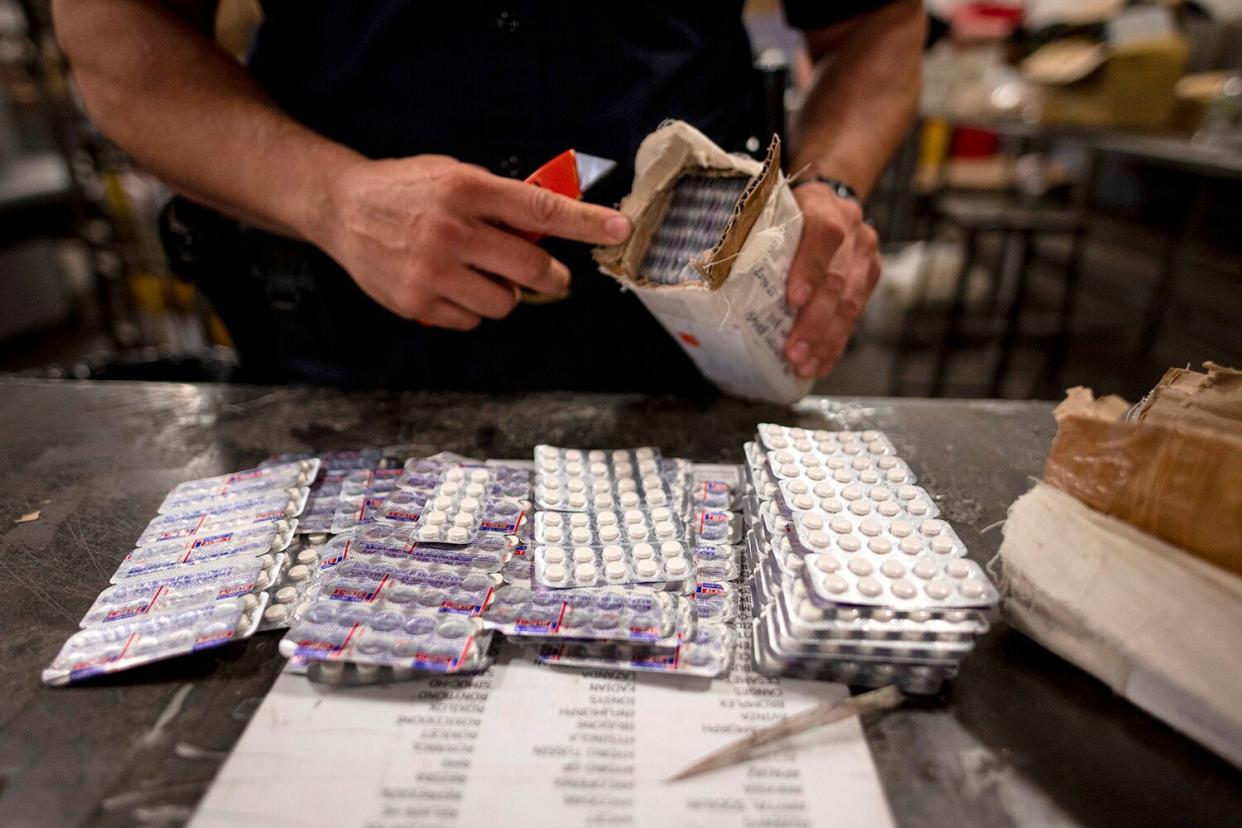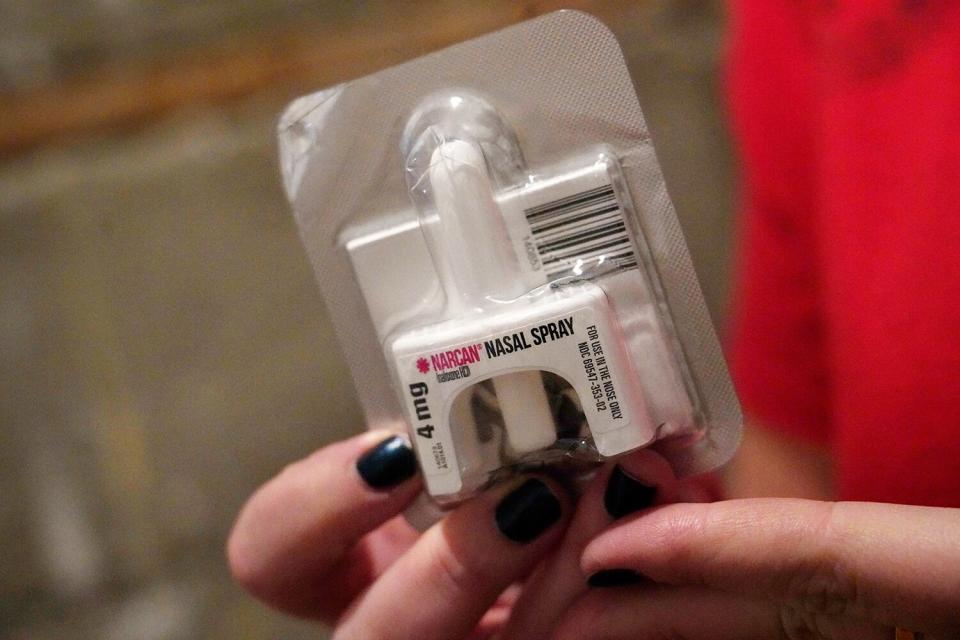How Fentanyl Became One of the Biggest Causes of Drug Overdoses in the U.S.

- Oops!Something went wrong.Please try again later.
- Oops!Something went wrong.Please try again later.
JOHANNES EISELE/AFP via Getty Fentanyl
In the early hours of Sept. 4, comedians Fuquan Johnson and Enrico Colangeli, along with one other person, died of a suspected accidental fentanyl overdose. And on Friday, Michael K. Williams' cause of death was ruled an accidental overdose involving fentanyl.
It's a cause of death that's become increasingly common in the U.S. — in just six years, between 2013 and 2019, the rate of overdose deaths from synthetic opioids like fentanyl increased by 12, according to the Centers for Disease Control.
It's a problem that is reflected in a range of demographics, from celebrities like Prince, Tom Petty and Mac Miller, who all died of accidental fentanyl overdoses, to people in rural towns in West Virginia to cities like Boston.
"We've seen a major increase," says Dr. Traci Green, professor and director of the Opioid Policy Research Collective at Brandeis University, tells PEOPLE. "Fentanyl has reached into communities where it hadn't ever been before."
The highly potent opiate is a synthetic, or manufactured, substance intended for use as a pain reliever.
"It's a medicine, and it's exceptionally important," Green says. "It is how you can have a same-day outpatient surgery or a colonoscopy, and go home and feel okay. It's fast-acting and strong, in so far as it will bring that immediate pain relief."
But "because of the form and because it can be manufactured," she says, people can make their own and formulate it to make it stronger or weaker, which leads to potentially life-threatening situations. And in the loose, illicit manufacturing process, fentanyl often gets mixed in with other similar-looking drugs like cocaine or heroin.
"Unfortunately, it looked like a white powder which looks like a lot of other white powders out there," Green says. "These aren't substances that are prepared, and packaged, and labeled in a way that we know the content and what is what. It's not uncommon to see what should have been cocaine distributed, that it be fentanyl. That often is unintentional. It's unintentional delivery, if you will, unintentional distribution of fentanyl."
Typically, fentanyl overdoses occur when the user believes they're doing heroin or cocaine by itself, but the fast-acting fentanyl is unknowingly mixed in.
"If someone who's used to taking cocaine at parties who does a line of fentanyl or even cocaine that has some fentanyl in it, that can really be the difference between life and death," Green says. "It's compounded because people aren't prepared, and they're not suspecting it."
And "the idea that someone who is selling or providing substances to another person has any idea what's in it is laughable. If I don't know, as a scientist with all this fancy machinery, how possibly could a low-level drug dealer know anything about this?" she says. "Many of these people who use drugs and the communities are completely unsuspecting, and I think that's part of why we have to reach our arms a little wider to help each other."
Fentanyl is now pervasive enough in the U.S. that it's not a question of stopping the market, but reducing the chance of overdoses.
"We have to learn to live with fentanyl because it's here to stay," Green says. In some ways, it is like getting used to living in an environment where we do infections, and we do have viruses. We have to adjust, and stay safe, and take care of each other, and be on the lookout."
RELATED VIDEO: Mac Miller Died of Accidental Overdose of Fentanyl, Cocaine and Alcohol: Coroner
One way of staying safe is using fentanyl testing strips, which are available for free at health centers and other locations in most states. People can take a tiny amount of the drug substance they have and place it into a cup with a small amount of water, and much like a pregnancy test, colored lines will come up if fentanyl is detected.
Another option is having antidote medication on hand.
"Thankfully, fentanyl responds really well to naloxone, or Narcan," Green says. "That means that if Narcan is available and in the hands of people at that party, or at the housing structure or wherever, we'd have more opportunities for a quicker response."

Lea Suzuki/The San Francisco Chronicle via Getty Narcan
And in cases of accidental fentanyl overdoses or arrests for possession, Green emphasizes that it's important not to punish people, but to provide a pathway to treatment.
"We shouldn't be arresting people and charging them with homicide because they probably don't have any idea what's happening. It makes it worse," she says. "The Black and African American community, and Hispanic and Latinx community suffered greatly for a long time in silence and without recognition of overdose risk, and the harms of heroin, and the really racist drug laws. We have a chance, I think, to do better. Fentanyl can maybe, sadly, point us the way in how to do better in this moment."
RELATED: Meet the Tennessee Mom Working to End the Opioid Epidemic: 'We Need Empathy and Compassion'
Green says that destigmatizing drug use can help.
"We need to do a lot better. There may be shame of serious mental health concerns, or shame of their own use, or shame of returning to use or relapse," she says. "There's a lot of community support for families and friends in need, but it is a shaming and stigmatizing condition. It's hard to care for and love people in a substance use disorder, and we need help."
If you or someone you know is struggling with addiction, please contact the SAMHSA substance abuse helpline at 1-800-662-HELP.
